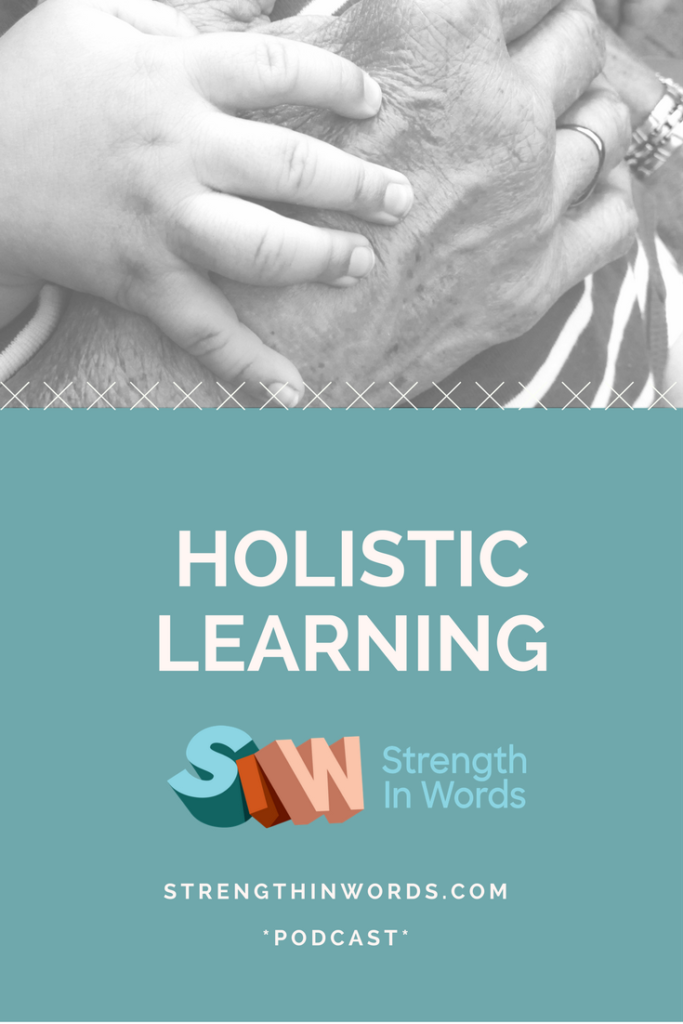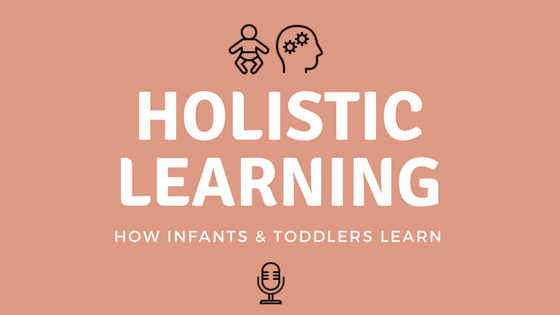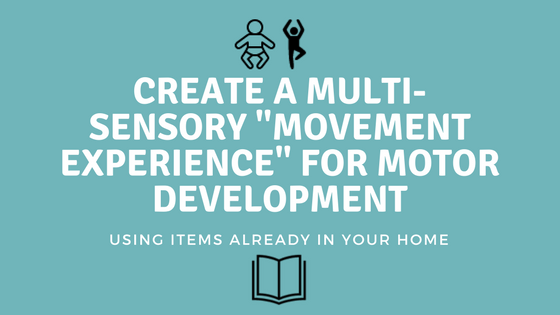Infants and toddlers learn holistically. We have to look at the whole child!

On this episode of the Learn With Less podcast, Ayelet discusses the fact that infants and toddlers are learning “all at once” – learning in one developmental domain cannot be separated from learning in another!
Below is a transcript of this week’s “Developmental Thought,” an excerpt from the full episode.
For additional information, music, play ideas and the complete interactive family experience, please listen to the entire episode.
I want to talk about the fact that development of vocal play and movement and conceptual learning and emotional bonding are all sort of happening simultaneously in activities like the one we just did.
We know that infants and toddlers engage in what’s called, “holistic learning.”
>>Don’t Miss Our Corresponding Blog Post!<<
This means that although there are various areas of learning and development as we understand them (terms like cognitive development, communicative development, motor development, social/emotional development), these are all very much connected in the first three years of life.
Follow Your Baby
Throughout this period, your child may focus on a certain type of skill or interest in one domain, (as in, one of those areas I just mentioned), but she processes all kinds of information pretty simultaneously. Each influences the other.
If you, as the adult, structure an activity looking for a particular outcome, you may very well actually miss out on your child’s larger “learning experience” – and therefore lose out on opportunities to keep her engaged.
This is why I always say at the beginning of my show, “follow your baby’s lead.” Remaining flexible allows us as adults to naturally observe our child’s interests, and helps maintain attention and engagements on both sides.
How Humans Learn
Humans learn when provided with love and support, and through exposure to new experiences. The more we can support their experimentation, the more information we allow them to give themselves.
So any time they study something with their eyes or mouth, anytime they pause to look around at something, any time we ask them a question and they take a moment before responding – they are integrating information: THIS is learning!
As adults, we’re used to expecting “learning” to look a certain way; however, for young children, especially those under the age of three years, learning often takes the form of very small steps towards mastery.
We must appreciate that their brains and bodies are growing in a way that we cannot always anticipate – they are making connections and experimenting with the ways their bodies move, how sounds and words fit together, how objects feel and move in space, and how they relate to others socially.
When we think of early learning this way, it incites us to think of our role as caregivers more as guides and supporters of learning than as instructors.
Let Baby Alone
I want to encourage you, as much as you can, to resist the urge you may have to take your baby’s hand and bang it on the drum for her, or to hold her hands and clap for her. Instead, demonstrate to her visually, tap the beat on your body (or on her body), let her hear the words and rhythms, and engage in these kinds of activities many times in different ways (again, there’s that phrase I love so much: repetition with variation!)
Remember, we know that young children learn primarily through imitation and interaction. It will be very rewarding for you and for your little one to allow that moment when she does it herself to come naturally. Absent of any motoric challenges, your baby will learn to move the way she sees you do in her own time.
When you allow her that freedom to move on her own volition, you allow her to make those connections herself. This is very powerful for you( and sometimes takes great forethought and restraint), and also very empowering for your baby!

